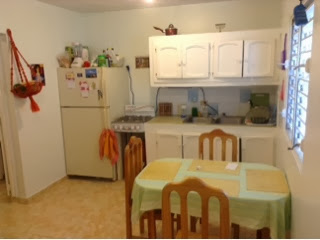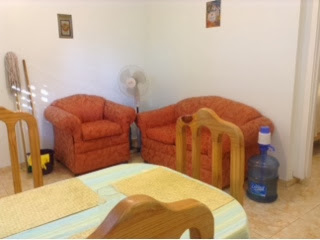A blog post by Adam. It isn't until your flight home is threatened by a national strike that you realize you're really ready to leave.
When we arrived in Buenos Aires four days ago we saw the signs plastered all over the city:
April 10, 2014 - Paro Nacional (National Strike)
Buenos Aires is covered in signs and graffiti so we didn't think much of it. Instead, we went about our way as tourists. Visiting the traditional antiques and crafts fair in San Telmo on Day 1 and a tango and candombe gathering on Night 1 (in addition to stops at three different ice cream parlors). Day 2 brought rain storms and so we opted for a free city bus tour, a visit to colorful La Boca and at night an incredible percussion concert with Bomba de Tiempo (time bomb). We started Day 3 with an Israeli dancing class, followed by visits to the Water and Sanitation Museum and the Fine Arts Museum. As night was beginning to fall and we were preparing to go to dinner at my cousin Ana's house, we decided to book a taxi to the airport for the following day. It was at this moment that we realized we were leaving on April 10 at 1:00 am...just as the national strike was about to begin.
We talked to the hostel receptionist and he said that Aerolineas Argentinas and Lan Airlines had already cancelled all of their flights for the 10th and it wasn't clear what might happen with other carriers. And so began our wild goose chase to find out the fate of our Copa flight.
First, the hostel receptionist looked up the number for Copa. We called it and after a confusing exchange on the phone realized he had given us the number to a travel agency that sells Copa flights. They kindly gave us the actual number to Copa, which we proceeded to call only to get caught in the tangle of machine menus with no apparent portal to an actual human. We realized we needed to get to dinner, so left the investigation for later.
At Ana's house we had an amazing meal, and shared stories and pictures of our recent trip to Patagonia and their recent trip to Tierra del Fuego. Ana also kindly gave us the address for the United airlines office in Buenos Aires (a Copa partner). She said we should go to their office the following morning because the Copa folks were incompetent. When we returned to the hostel exactly 24 hours before our scheduled flight I made a quick call to Orbitz who said they didn't know anything about the strike. They too instructed me to seek the counsel of Copa or United.
Day 4 began with what we hoped would be our final bag packing, a quick breakfast and then off to grab bikes to go to the United office. We had enrolled in the city bike program during our first visit to Buenos Aires - the program allows you to borrow a bike for an hour from any of 25 bike stations for free. You can return the bike to any station throughout the city, making it a great way to commute from one part of the city to another without having to worry about returning the bike to the station where you started.
Unfortunately, the address Ana provided us was for a travel agency that sold United tickets (not for the United office). From there we were directed in the wrong direction and after two more stops inquiring where United might be located, we arrived at the United office. They told us they weren't really sure what would happen with the strike and said we needed to go to the Copa office. We hopped back on the bikes, biked across the city, and after lunch and some help with directions from the tourist office, finally arrived at Copa. Copa informed us that they thought the flight would take off, but they really weren't sure and thought we better get to the airport four hours before takeoff.
With still unclear information but nobody else left to ask we decided to take a bike ride around the nearby nature reserve. As we circulated the beautiful reserve on the River de la Plata shoreline, I realized that I didn't really want to miss my flight even though it also felt like the trip had passed too quickly. Buenos Aires was an incredible city and there was so much we were leaving unexplored. Nevertheless, I wanted to make it home for Passover, only four days away. It's true we could find a Passover Seder in Argentina if necessary, and it would be an interesting cultural experience. But given the unpredictability of life, and particularly traveling, I longed for the stability of a holiday steeped in tradition. I wanted to be with family and friends. It had been an amazing trip but it was time to come home.
After the bike ride we lounged in one of Buenos Aires' many parks and ate our final pizza and dulce de leche ice cream. We took a crazy cab ride through some of Buenos Aires' roughest neighborhoods in an effort to avoid the first strikes that had already clogged the freeway. It didn't look good for us getting out of the country.
But then we waited in line, moved quickly through immigration and boarded our plane. Our plane took off without a hitch. This year we would make it home for Passover. This year, thank goodness, would be no different than years past.





























